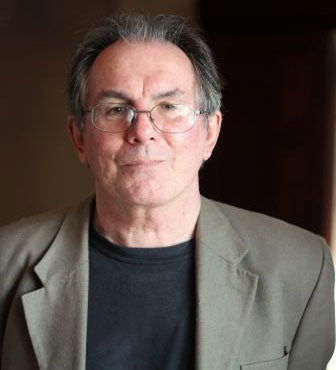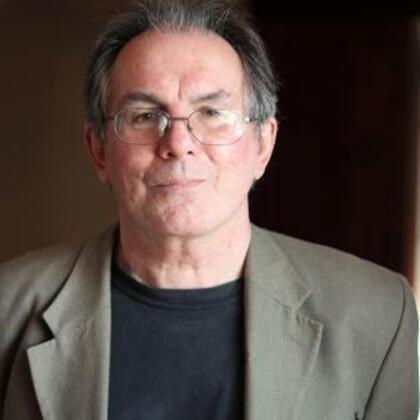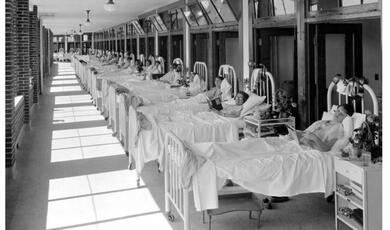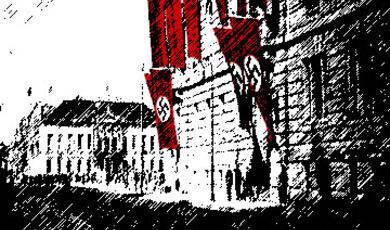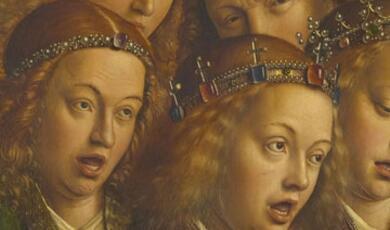Mozart and Vienna
Share
- Details
- Text
- Audio
- Downloads
- Extra Reading
This lecture focuses on the relationship between the famed composer Mozart and Vienna. The Vienna of the 1780s seemed in some senses a step backwards compared to London in Handel’s time. The centre of old Vienna, narrowly circumscribed and strictly separated from the suburbs beyond, was a place with an unambiguous ruler, the Emperor Joseph II, and a ruling class of nobility. Well-heeled aspirants could buy their way into this nobility, but the price was not low and tensions between “old money” and “new money” were considerable. These class divisions meant Vienna housed three types of opera (serious opera, comic opera and Singspiel), all of them blessed with Mozartian examples.
Download Text
MOZART AND VIENNA
Professor Roger Parker
The last lecture found us in London at the start of the eighteenth century. Although many of the buildings from that period remain to this day, the wildly improbable operatic world that Handel created on his first trip to the capital may still seem very distant. Handel’s characters can of course still bring tears to our eyes, but we may feel they do so almost in spite of themselves and their extremely stylized mode of discourse. But now, as we move again forward in time, matters change: this week we arrive at the end of the eighteenth century, to Vienna and the operas of Wolfgang Amadé Mozart, and thus, in some ways at least, to the brink of modernity.
The geographical shift, though, is less straightforward than it might seem in terms of “progress”. London in Handel’s time was, as we saw last time, in many ways an “advanced” capital in the social and political sense. Because of famous events in the middle of the seventeenth-century, the influence and scope of the British royalty was much reduced. Power and money circulated relatively freely: sometimes in an unstable and unpredictable mix, but it circulated none the less. In these terms, our new venue, the Vienna of the 1780s, the city in which Mozart enjoyed so many splendours and endured so many miseries, seems in some senses a step backwards. The centre of old Vienna, narrowly circumscribed and strictly separated from the suburbs beyond, was a place with an unambiguous ruler, the Emperor Joseph II, and a ruling class of nobility. True, and as in London, well-heeled aspirants could now buy their way into this nobility; but the price was not low, and even when entry had been assured, the tensions between “old money” and “new money” were considerable. Equally true, the start of Joseph’s reign, in 1780, saw a period of fairly radical social reform, with the power of the nobility and the church reduced, and with the crippling taxes levied on the poorer parts of the population made less harsh (mostly at the expense of rich landowners). But in the latter half of the decade, and especially in the wake of disastrous military adventures and profoundly disturbing news of revolution in France, these reforms were mostly put into reverse.
This is the unstable, constantly shifting social and political context against which all of Mozart’s mature operas were written, and we might immediately see that the changes that had come over opera since the days of Handel in some sense reflected the new ambience. Vienna, and other principal cities in the vast Austrian empire, housed three types of opera, all quite distinct, and all of them blessed with Mozartian examples. The first was opera seria, serious opera, which might be seen as the bastion of “old money”, of the ruling classes. In terms of subject matter it was not greatly changed from Handel’s day, with the old mythological and ancient-world plots still favourite, and the action likely to be an evening-long celebration of the status quo, with (at the end) an enlightened but absolute ruler bestowing wisdom and mercy on his subjects. In formal operatic terms there was also continuity. Although the domination of solo arias was somewhat reduced, with a greater number of duets and other ensemble numbers, and also with the active participation of the chorus, the norm was still a somewhat statuesque notion of solo utterance.
The second type, opera buffa or comic opera, was markedly different. Although it often played in the same venues as opera seria, it could (at least in Mozart’s hands) deliver a rather different message, as it was peopled by a much less monolithic collection of characters. Typically theopera buffa would involve a much broader social mix; crucially, the servant classes could speak roughly the same language, and operate in roughly the same lyrical sphere, as their masters and mistresses. What is more, these servants and aristocrats sometimes mixed together in a manner that strongly challenged old divisions and hierarchies. As if to reflect this new fluidity, opera buffa was much more likely to see characters develop by means of musical interaction with each other, with duets becoming almost the norm, and with a particular focus on large, act-ending ensembles in which all could mingle freely in song. The third type of opera was Singspiel, German language opera, with spoken dialogue rather than recitative, and with a much more frankly popular appeal; something closer to vernacular spoken theatre, with a huge range of possibly plots, but usually with some fantastic or exotic setting to titillate the crowds.
Today I want, as usual, to concentrate on just one opera, and almost inevitably I’ve chosen Le nozze di Figaro (The Marriage of Figaro), anopera buffa that Mozart wrote in the middle of his ten-year Viennese career, and a work that has fascinating resonances with both its social and political context and with the composer’s own life story and aspirations. It is to the latter aspect that I now need to turn: I need, that is, to talk about Mozart the man.
This isn’t easy, if only because Mozart has probably suffered more thoroughly than most from the romantic myths that rose around him during the nineteenth century. Particularly as they involve the last ten years of his life, when he forsook provincial Salzburg and the protection (perhaps over-protection) of his composer-father Leopold, to essay the wider and more uncertain world of Vienna, they have proved extraordinarily tenacious. So clichéd is the sad tale of his final years that we can, aping Humbert Humbert's laconic account of his mother's demise, “(picnic, lightning)”, almost get by with a telegram: isolated genius—writing for posterity—bohemian life—the eternal child—society misunderstands, ignores—faithless, feckless wife—dies young, in poverty--the Unmarked Grave. As we all know, this picture was injected with new life by the success of Peter Shaffer's play (and then film) Amadeus, whose veneer of shocking realism and occasional flights of pure fancy hardly conceal its basic reiteration of the romantic image. A revision was long overdue, and recently several scholars have stepped up to the plate.
So: those of you who are up-to-date in Mozart scholarship will know that the record of Mozart's later career has now been put under much closer scrutiny. Of course, there remain a few mysteries: the documentation of these years is—considering Mozart's steadily growing international reputation—surprisingly sparse. Unfortunately, few of his letters survive, fewer still that were written to him; many were undoubtedly hastened to oblivion by his widow, the formidable Constanze, and her second husband; the evidence that remains thus constantly threatens to present a distorted picture. But, as I said, there can now be little doubt of the basic facts.
After his move from Salzburg to Vienna in 1781, and after his acrimonious departure from the service of Colloredo, Archbishop of Salzburg, the twenty-five-year-old Mozart fashioned for himself a successful career in Vienna as what we would now call a “freelance” musician. He received money from private piano pupils, from opera commissions, from selling music to publishers and, most of all, from a glittering career as composer-pianist, playing and sometimes organizing concerts in which he would star as the soloist in his own piano concertos. By 1785, when his father came for a visit, crusty old Leopold could report success on all fronts. His son was living in a spacious apartment in the centre of Vienna, and doing very well indeed. In 1786 there was even more prestige when Mozart was commissioned to supply The Marriage of Figaro for the Court Opera in Vienna.
But that was, as it turned out, a high point. The latter half of the 1780s saw a gradual but significant decline in Mozart’s fortunes, a decline that was by no means entirely his fault. The disastrous series of Turkish wars caused many of Mozart's aristocratic patrons to withdraw from Vienna, and his lucrative concert career seems virtually to have collapsed. True a further series of opera commissions brought in considerable sums (Don Giovanni and La clemenza di Tito were written for Prague, Così fan tutteand The Magic Flute for Vienna), he also netted a modest appointment as Court Chamber Musician and continued to profit from sales to publishers. But inexorably his income decreased, sometimes sharply: he was obliged to move into less luxurious accommodation in the suburbs and, increasingly, to beg and borrow from friends. He may also have added to his financial woes: perhaps there were gambling debts; we simply don’t know for sure. By 1790, though, he was again in the ascendant: he was paying off debts, sending his son to an expensive boarding school, considering lucrative offers from impresarios in other capital cities. His fatal illness in December 1791, probably a kind of rheumatic fever, was sudden and unexpected. He was buried in a communal grave, unattended by mourners not because he died in obscurity—far from it, his international reputation was continually growing—but in accordance with Joseph II's draconian brand of rationalism: as well as banning corsets, bell-ringing in thunderstorms and the making of honey cakes, the emperor had strictly enlightened views on how economise on and sanitise burial of Vienna's dead.
In spite of this new and more accurate picture of Mozart's life and times in Vienna, our protagonist's personality remains something of a mystery. Just as an example, let’s look at two very different portraits of the composer: the first (an oil painting by Barbara Krafft) presenting a severe, “public” persona, complete with wig and court regalia:
The second (a silverpoint drawing by Dora Stock, from 1789) gives us, on the other hand, a glimpse of a much more “private” (and much more “modern”) persona.
Where amongst these portraits does the “real” Mozart lie? With relatively few contemporary accounts of the composer, our major source of information is his correspondence, and the voice that speaks from these pages is again not easy to decipher. Many of Mozart's letters are to his father Leopold, who remained a central influence well into adult life, and whom the son treated with a complex mixture of affection, fear, exasperation and solicitude. Mozart's opinions as gleaned from this family correspondence often seem less his own than notions of what a distant, anxious and deeply conservative parent might want to hear (perhaps a projection of that “court” Mozart in the first portrait). For example, although most of the evidence suggests that Mozart's marriage to Constanze Weber was “modern” in its level of what we might anachronistically call emotional equality, when describing his future bride to Leopold in the early Vienna days, Mozart painted a distinctly old-fashioned picture, quite possibly intended as a soothing recreation of his mother's role in his father's life:
Her whole beauty consists in two little black eyes and a pretty figure. She has no wit, but she has common sense enough to enable her to fulfil her duties as wife and mother. It is a downright lie that she is inclined to extravagance. ... Tell me whether I could wish myself a better wife?
Again, a contemporary portrait of Constanze may help us here, an oil painting by Joseph Lange from 1782 (about the time of Mozart’s description) which seems very much to agree with the composer’s less-than-entirely flattering picture.
But let’s immediately juxtapose that with a later portrait of Constanze, an oil painting from 1802 by Hans Hansen, and thus a decade after Mozart’s death. This again is a much more “modern” persona, and—the contrast is striking—a much, much more formidable character: now the widow of a famous composer, and very much the controlling presence is his posthumous image. Which of these two was the “real” Constanze?
After Leopold's death in 1787 we have even less to go on so far as Mozart’s character is concerned. Apart from the famous series of “begging” letters to his fellow freemason Michael Puchberg, documents that were profoundly influential in constructing the Romantic scenario of Mozart's last years, very little correspondence has survived until the final year, when we encounter a group of intimate letters to Constanze, from whom he was separated while travelling in search of new commissions, or while she underwent treatment at a nearby spa. These last letters have caused some embarrassment to biographers, and were occasionally “cleaned up” by Constanze and her second husband. They contain a good number of private jokes and much banter, some of it scatological, almost all pretty far below the sublime. Here’s an example:
On June 1st I intend to sleep in Prague, and on the 4th—the 4th—with my darling wife. Arrange your sweet nest very daintily, for my little fellow deserves it indeed, he has really behaved himself very well and is only longing to possess your sweetest [word deleted]. Just picture to yourself that rascal: as I write, he crawls onto the table and looks at me questioningly. I, however, box his ears properly—but the rogue is simply [word deleted].
The idea of Mozart's “rascal” being “simply [word deleted]” was one that, understandably, biographers eager to paint a picture of the pathetic last years found hard to accommodate.
As well as ignoring certain types of evidence, Mozartian biographers of the past, particularly it seems the German ones, have often armed themselves with hindsight's heavy club, apportioning blame and dealing out punishment to those judged responsible for the misfortunes of their hero. As I said a moment ago, and as will become important when we look at the operatic evidence, Mozart’s marriage to Constanze was “modern”, and he was proud of that fact: this was not a union based on economic matters, but one based on mutual feeling. Biographer Arnold Schurig, writing in the 1920s, would have none of this: he confided that “Constanze certainly does not belong among the radiant figures who, in their companionship with an homme supérieur as a friend, lover, or wife, recognized his calling”. Alfred Einstein, in what is still regarded as an important Life and Works, declared that Constanze
was not even a good housewife. She never looked ahead, and instead of making her husband's life and work easier by providing him with external comforts she thoughtlessly shared the bohemianism of his way of living.
Even Wolfgang Hildesheimer, whose impressionistic biography of the late 1970s was consciously “revisionist”, plays the same misogynist tune:
Constanze ... played no role in the tragedy of his estrangement from society. It seems probable that she never suffered mental torment, and even her physical sufferings seem primarily to be an excuse for her visits to spas. Constanze had a lighthearted, instinctual nature; she granted Mozart (and perhaps not only him) erotic, or at least sexual satisfaction, but was unable to offer him the happiness a lesser man needs for self-realization.
It is difficult to escape the feeling that Constanze is being punished here not only because she gave no sign of having worshipped her husband, but because she was the recipient of those late letters in which Mozart's sexual and emotional needs are so plainly stated. She made him seem embarrassingly normal, and for that could never be forgiven.
To repeat the question: can any of this social, political and personal background play into the operas? Before exploring this, we need some general background and a cautionary tale.
The libretto of The Marriage of Figaro, written by Lorenzo Da Ponte, is typically complex, but in essence is easily told. Deriving from a nearly contemporary play by Beaumarchais, it is, at base, the story of two couples, one from the aristocracy, the other from the servant classes, over the course of a hectic day. The aristocratic couple is Count Almaviva (baritone) and his Countess (soprano). Their marriage is not happy, mostly because the Count has a roving eye. At the very start of the opera it becomes clear that his eye has lighted on Susanna (soprano), who is the Countess’s maid, and who is about to marry the Count’s valet Figaro (bass). This basic plot is further complicated by Cherubino (mezzo-soprano), the Count’s excitable young page, who is in love with both Susanna and the Countess (and, we assume, any other attractive female he encounters), and by a host of minor characters who enact various subplots I won’t trouble you with. In four complicated acts, this drama plays itself out, with the Count making multiple attempts at seduction, but eventually being duped by the Countess and Susanna together, who switch clothes and thus expose his attempted infidelity. The opera ends with the Count, humbled, begging forgiveness from his wife, and all (we hope, but somehow doubt, given the complexity of their feelings for each other) living happily ever after.
Even from this brief resume, it will be obvious that Da Ponte’s libretto can easily be read through the political lens of 1780s Vienna, so much so that it has revealed for some a detailed programme. A typical account ofFigaro along these lines would announce that the opera is nothing less than a covert message in support of Joseph II's attempts at reforming aristocratic privilege; at, if you want, humbling the Count’s class. It is, though, extremely difficult to find any support for such readings, in particular no sense in which the ruling classes (who were, let’s be clear, the principal patrons of the opera) thought themselves thus threatened. What seems to me more likely, and what I want to explore in what remains of the time today, is an alternative way in which the opera might have been resonant with the times: not a political narrative, but a personal one, one in which the relationships that emerge between Mozart’s main characters are a commentary on the new social mobility that was such a source of tension in Vienna, and (more important) on the new sense of personal relationships that was emerging simultaneously, not least in Mozart’s own marriage.
Take the first duet, between Susanna and Figaro. This grew out of a very small exchange at the very start of the original Beaumarchais play. The scene opens on a partly furnished roon, Figaro with a measure in his hand, Susanna at the mirror, trying on a hat decorated with flowers:
FIGARO: Nineteen feet by twenty-six.
SUSANNA: Look, Figaro, my bonnet. Do you like it better now?
FIGARO (taking both her hands in his): Infinitely better, my sweet. My, what that bunch of flowers—so
pretty, so virginal, so suited to the head of my lovely girl—does to a lover on the morning of his wedding!
Some information is offered here, in particular that they are to be married that day, and that Figaro compares his future wife to “virginal” flowers. Now let’s look at the Italian libretto.
As you’ll see of course that there’s poetry now instead of prose, and that there’s an opportunity for the couple to sing together at the end; but basically the “plot” is the same. Figaro does one thing; Susanna asks him to do another; Figaro does what he’s asked to do. So far, so simple.
But when the music arrives, this simple relationship gets quite a bit more complex. Let’s listen to the opening exchange. You’ll hear an orchestral introduction that conrains two very different themes: the first, a “pacing” motive in the strings; the second a “circular” motive in the woodwinds. When the characters start singing, it’s plain that the first theme is “Figaro’s”, and the second is “Susanna’s”, just as we might expect. The performance here features the English Baroque Soloists, conducted by John Eliot Gardiner; Bryn Terfel is Figaro and Alison Hagley is Susanna:
That all seems simple enough; a simple musical rendition of the libretto and play. But if we listen now to the entire number, we’ll quickly see that the continuation of the duet is much more complicated. For a start, Figaro doesn’t immediately answer Susanna after that opening exposition of their two themes; instead (as you’ll hear) he continues with his pacing; Susanna asks him to look at her with more and more insistence. Eventually Figaro succumbs, and comments on her hat while singing “her” tune. But he does so in a low, unconvincing voice (is he just saying the words, not really looking at her?, is he—as husbands are routinely accused even to this day—simply not listening?). As if to demonstrate that this is the case, Susanna continues to ask him to look. Eventually he plainly pays real attention, and they join together (of course singing “her” tune) at the close. What then was a simple piece of dialogue in the play and libretto, has become a little musical drama, one in which male and female have negotiated a settlement: in which the female has “won” and the male is happy that she has done so. To put this all another way, the audience has been offered a kind of sentimental education: an illustration of how men and women in the “modern” world interact freely, and can (with a little insistence) resolve their differences.
Before we listen again, there’s one other musical detail that I want you to attend to: it’s the rather prominent horn flourish that finishes of the orchestral introduction, and also the entire number.
That horn call I wanted you to listen to is what you might call an orchestral worm in the bud, one that turns up periodically in Figaro. You’ll recall from countless European tales that the husband whose wife is unfaithful, the cuckold, will (so the story goes) grow a horn on his head. Remember Othello telling Desdemona that he has a pain in his forehead. And there’s no doubt (here and more obviously later) that prominent horn sonorities are a punning sign of jealousy and infidelity lurking just around the corner.
At that leads us to a second duet between baritone and soprano in Figaro, another battle of the sexes, another little operatic drama, but this time with the stakes much higher. It comes deep in the action of the opera, in Act III, and is the major moment in which the circumstance that drives the plot of Figaro (that the Count wishes to seduce Susanna) is made musically manifest. Before we look at the number, though, some background into seduction will again be useful.
I used the word “seduce” a moment ago, and I guess we all understood what I meant; but it’s as well to recall that the meaning of the word has travelled far during the last few centuries, adapting as it has to shifting attitudes to property, to gender difference and even the nature of human subjectivity—of who we think we are, how individual and emotionally independent we feel ourselves to be. In these, post sexual-revolutionary days, the word seems mostly to be used with an ironic touch: it carries more than a hint of the archaic, summoning images of twirling moustaches, clicking heels and of course blushing maidens. “Oh, the vile seducer!”, we say, and smiles break out all round. As befits concepts that now seem slightly artificial, the word has mostly taken up residence in metaphor. A real, living person is now less likely to “seduce” us than is a TV advertisement, or a gondola ride down the Grand Canal, or (come to that) a Mozart aria sung on a summer's evening at Vienna.
It was not always thus. The earliest (fifteenth-century) use of the word in English, and (if we are to believe the Oxford English Dictionary) probably in French, involved matters far from the metaphorical. To seduce was to purloin human possessions: “to persuade (a vassal, servant, soldier, etc.) to desert his allegiance or service”. Pretty soon the word acquired its sexual connotations, but in doing so it remained remarkably close to the earliest definition. To seduce an innocent woman was “to induce (her) to surrender her chastity”, but the OED explains: “in English law the plaintiff in an action for seducing a virgin is the parent or master who is supposed to have been deprived of her services”. The same applied to seduced wives, with the husband now the injured party. We are dealing, in other words, not principally with crimes again individuals, but against property. Seduction was a type of theft: a forced and illegal exchange of goods between men, with women as the commodity.
Another way to look at eighteenth-century seduction is as a dangerous crossing of boundaries. On the simplest level, the seducer strives to occupy a physical space “owned” by another: as Don Giovanni has done just before the curtain goes up, he enters the house of the Commendatore by some clandestine means, and then attempts to “enter” his daughter Donna Anna. But on many occasions the act is doubly transgressive in that the boundaries crossed will also be social, inviting a kind of exchange that many at the time of Mozart (particularly those in possession of the “old money”) saw as disruptive of civil order. Again Don Giovanni is a good example: an aristocratic seducer who seems to have no regard for social divisions, and who will—at least in the heat of the chase—treat a peasant girl in just the same manner as a high-born lady. As Leporello famously says at the end of his “catalogue” aria, “Purché porti la gonnella, voi sapete quel che fa” (as long as she's wearing a skirt, you know what he'll do).
As many here will know, one of several “seduction” moments in Don Giovanni is just such an example of social boundary-crossing. “Là ci darem la mano”, sings cavaliere Don Giovanni to peasant girl Zerlina, and the directness of the melody and accompaniment demonstrates how skilful he is in adapting his discourse to the business in hand. But the parallel duet in Figaro, between Count Almaviva and his maid Susanna at the start of Act III, is more complex. The Count may think he's in control, but the spectators know that Susanna is merely acting her part with a view to entrapping her would-be seducer. Again, a glance at the text makes this circumstance clear, with no doubt about the two opposing positions of the couple. Da Ponte injects a joke, several times repeated in the musical setting, in which the Susanna gets confused by the Count’s ardent questioning and says “no” when she’s meant to say “yes”, and “yes” when she’s meant to say “no”.
Again, though, the music might make a potentially clear-cut case much more complex. Let’s immediately listen to the number straight through, and see whether you think Mozart, as he did in the first duet, inflects the words to a different purpose. Here the Susanna is again Alison Hagley, the Count is Rodney Gilfrey.
The Count, as you heard, begins in high aristocratic tone, in a grandiose and mock pathetic minor mode (“Crudel! perché finora”), with elaborate word repetition. However, instead of high-toned resistance and outrage, he is met with bland acceptance and an artful turn to the major, so much so that for a time he seems not to react musically, keeping to the same pathetic, pleading tone. Eventually, though, the acceptance sinks in, and he launches into a celebration of victory which turns to A major at the words “Mi sento dal contento”. The important thing to note here, I think, is that the melody is very beautiful--“seductively” beautiful, you might say—much more so than his opening, rather severe discourse; and that may remind us that, in much of this opera, the Count behaves badly but is disturbingly likeable as a musical character. It may in this sense be significant that it is only after his annunciation of this beautiful, A-major melody that Susanna becomes flustered, and starts giving the “wrong” answers to some of his questions: which answer does she want to give? we might ask. It may also be significant that, by the end of the duet, this “couple” seem musically almost at one, with Susanna singing “the Count’s” beautiful melody with some passion herself. Is, in other words, Mozart’s music pointing out something rather subversive? Is he telling his audience that boundary-crossing is frighteningly easy in opera, where music is a great leveller of social pretensions?
I want to touch just briefly one further passage from the opera, probably its most famous. It comes near the very close of the opera, and again the libretto gives little hint of what is to happen musically.
At a climax of mistaken identities, the Count is furious with everyone, until the Countess begs forgiveness for all. At this he relents, asks herforgiveness, and all join in a final chorus. This is, as you see, a simple exchange in the libretto, a matter of a few lines. In Mozart’s hands, though, the passage turns into an extended opportunity for some of the most beautiful music in the opera: music that, what is more, seems in its extreme simplicity to draw all the characters, servants and aristocracy, together in a final hymn to humanity. The performers are as before, with the addition of Hillevi Martinpelto as the Countess.
A moment such as this touches somewhere near the heart of Mozart's operatic achievement; I would guess we’d all agree about that. But it does so in part because it engages some of the delicately poised balances that enliven all great operas: a medium whose deep irrationality is often cloaked in rigid generic conventions, and whose political, social or biographical subtext will thus shift with the times. Was Mozart offering a political statement in The Marriage of Figaro? Perhaps he was. But to me, and much more importantly, he was offering his Viennese audience, themselves on the very brink of the modern world, a kind of sentimental education, one that he was himself undergoing. The opera offered them glimpses of a make-believe world in which relationships between men and women were less certainly bound by the constraints of class; indeed, in which such “relationships” might no longer be primarily economic, primarily a means of keeping wealth strictly controlled and circumscribed. It was, to be sure, a newly uncertain world: one in which “affection”, once thus liberated, could sometimes stray in the wrong direction, and in which jealousy and anger could emerge; but this very uncertainty made it ideal for the new styles of operatic expression that Mozart did so much to make his own, and of course make immortal.
© Professor Roger Parker, Gresham College, 27 November 2006
Part of:
This event was on Mon, 27 Nov 2006
Support Gresham
Gresham College has offered an outstanding education to the public free of charge for over 400 years. Today, Gresham College plays an important role in fostering a love of learning and a greater understanding of ourselves and the world around us. Your donation will help to widen our reach and to broaden our audience, allowing more people to benefit from a high-quality education from some of the brightest minds.


 Login
Login
